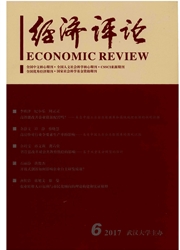

 中文摘要:
中文摘要:
本文将产业结构升级因素引入动态随机一般均衡模型并对其进行扩展,较好地模拟和分析了产业结构升级对中国经济波动的影响及其机制。敏感度分析表明,产业结构升级在增加了投资需求的同时相对减少了消费需求,但消费需求的波动缓和了产出波动而投资需求的波动加剧了产出波动,二者产生了一定程度的“抵消效应”,这可能是近些年来中国经济在高投资、高增长的同时并没有出现高波动的重要原因。反映动态冲击机制的脉冲响应分析发现,产业结构升级冲击使得投资产生较大的正向波动,但同时使得消费产生负向波动,这两种波动共同作用,最终使得总产出的波动不是很大,可见产业结构升级对中国经济波动的冲击总体上表现为“熨平效应”。
 英文摘要:
英文摘要:
By incorporating the upgrading of industrial structure into the DSGE model,this paper systematically analyzes the effects of the upgrading of industrial structure on China' s economic fluctuations and its mechanisms. In the improved DSGE framework,this paper clarifies the influence mechanisms of those effects by sensitivity analysis and impulse response analysis. The results indicate that the upgrading of the industrial structure has increased the investment demand but reduced the consumption demand. Meanwhile, the fluctuations of consumption moderate the economic volatility while the fluctuations of investment increase the economic volatility,which engenders offset effects jointly that lead to high volatility in the economy. That is to say, the upgrading of industrial structure has stabilizing effects on the economic fluctuations in China.
 同期刊论文项目
同期刊论文项目
 同项目期刊论文
同项目期刊论文
 期刊信息
期刊信息
